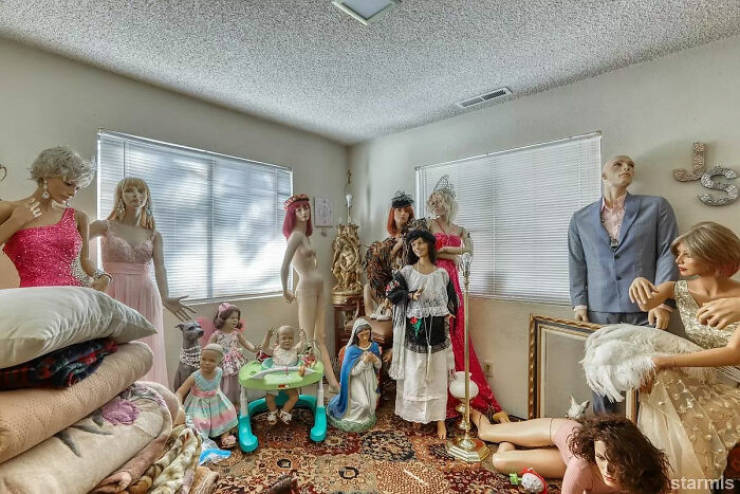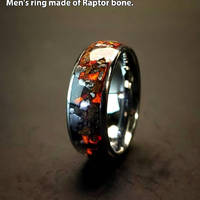The mannequins could be a way to grab everyone’s attention. Or they could be part of the sellers’ hobbies or even work. Or they could be moving around in the photos whenever you’re not looking

There’s a reason why many people find mannequins and dolls to be creepy. To sum up, it’s because some of their faces are made to look like those of people, however, there’s just something off with the details, meaning that some dolls can end up scaring us despite trying to be as close to reality as possible.
We intuitively know that there’s something wrong with a robot, doll, or mannequin’s face even if we’re unable to vocalize exactly why. ‘Lifelike but lifeless’ is one way to look at them: they try to imitate human beings without getting the most important details right.
On the other hand, we might find dolls and mannequins creepy because they mimic human faces without actually having anybody ‘inside’ behind the eyes, thinking, feeling, looking back at us. Cognitive neuroscientist Thalia Wheatley from Dartmouth University explains that we need to be able to “discriminate faces worthy of our thoughts, feelings, and actions from false alarms that are not actually faces.”
“Otherwise we might regard clouds, cars, or houses as objects with a mental life.” That’s why we need to be able to, first, distinguish faces and, second, understand which faces actually mean that we’re dealing with other human beings whom we can connect to.
Dolls mimic what real faces look like and our minds can understand this, however, we also know that these aren’t people—they don’t have minds. This creates confusion which leads to creepiness. Wheatley explains: “There are these signals that are telling our brain this thing is alive,” she says. “But we know it’s not alive. And that juxtaposition is really creepy.”
According to psychologist Stephanie Lay, this leads to a “dip in emotional response that happens when we encounter an entity that is almost, but not quite, human.” Welcome to the Uncanny Valley, population: far, far too many.







personal entertainment today: lets scroll through real estate advertisments and post something most people are likely to think to get likes & retweets
Clickbait
It's clearly labeled as a duplex.